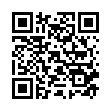|
|
Bulletin of Irkutsk State University. Series Mathematics, 2016, Volume 15, Pages 26–37
(Mi iigum250)
|
 |
|
 |
This article is cited in 2 scientific papers (total in 2 papers)
On maximal clones of ultrafunctions of rank 2
S. V. Zamaratskayaa, V. I. Panteleevb
a Medical Information-Analytic Center of Irkutsk Region, 2, Kalandarishvili, Irkutsk, 664011
b Irkutsk State University, 1, K. Marx st., Irkutsk, 664003
Abstract:
This paper considers functions mapping a 2-element set $A$ to all non-empty subsets of $A$. These functions are called ultrafunctions of rank 2. Ultrafunctions of rank 2 can be interpreted as functions on all non-empty subsets of $A$. Value of ultrafunction on set $B \subseteq A$ is determined as intersection of values on all elements of $B$, if this intersection is not empty, and as union of these values otherwise. Thus an unltrafunction can be specified by all of its values on elements of $A$. Superposition of ultrafunctions is determined the same way.
The number of maximal clones for all ultrafunctions of rank 2 is equal to 11 [V. Panteleev, 2009].
This paper studies properties of ultrafunctions with respect of their inclusion in maximal clones $\mathbb {K}_5$, $\mathbb {S}^-$, $\mathbb {T}_0^-$ and $\mathbb {T}_1^-$. These properties give some results concerning clone lattice (e.g., clones of intervals $I(\mathbb {T}_0\cap \mathbb {T}_1,\mathbb {T}_0)$ and $I(\mathbb {T}_0\cap \mathbb {T}_1,\mathbb {T}_1)$ are not included in clone $\mathbb {S}^-$; all self-dual and monotone ultrafuncions are included in $\mathbb {K}_1$ and $\mathbb {K}_2$). Some borders on classes of equivalence number are described (ultrafunctions not included in clones $\mathbb {T}_1^-$ and $\mathbb {K}_5$ generate no more than 32 classes of equivalence by relation of belonging to maximal clones). These results can be applied to classification of ultrafunctions by their inclusion in maximal clones.
Keywords:
ultrafunction, clone, base, maximal clone.
Citation:
S. V. Zamaratskaya, V. I. Panteleev, “On maximal clones of ultrafunctions of rank 2”, Bulletin of Irkutsk State University. Series Mathematics, 15 (2016), 26–37
Linking options:
https://www.mathnet.ru/eng/iigum250 https://www.mathnet.ru/eng/iigum/v15/p26
|
| Statistics & downloads: |
| Abstract page: | 187 | | Full-text PDF : | 70 | | References: | 64 |
|



 Contact us:
Contact us: Terms of Use
Terms of Use
 Registration to the website
Registration to the website Logotypes
Logotypes








 Citation in format
Citation in format 
